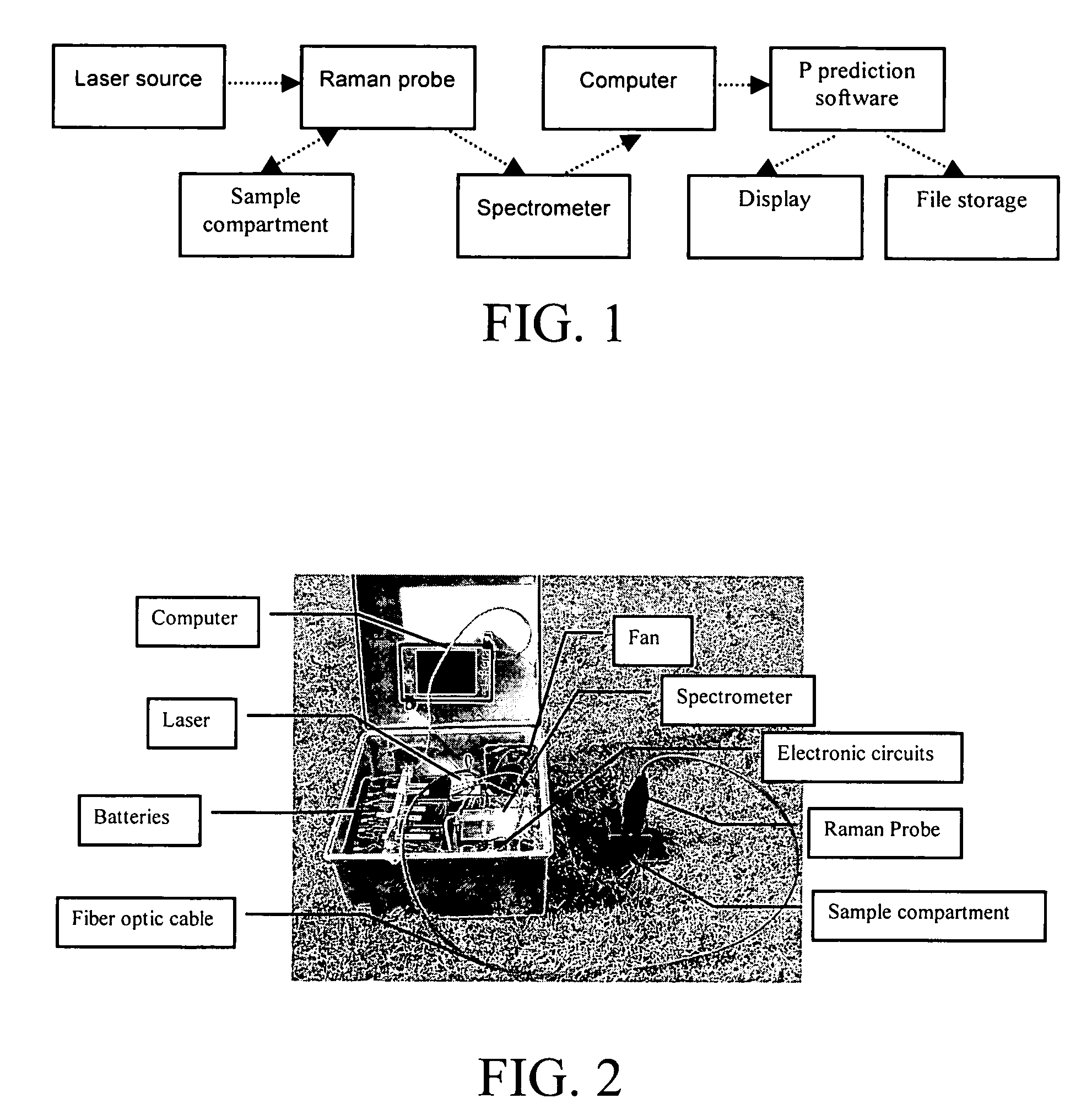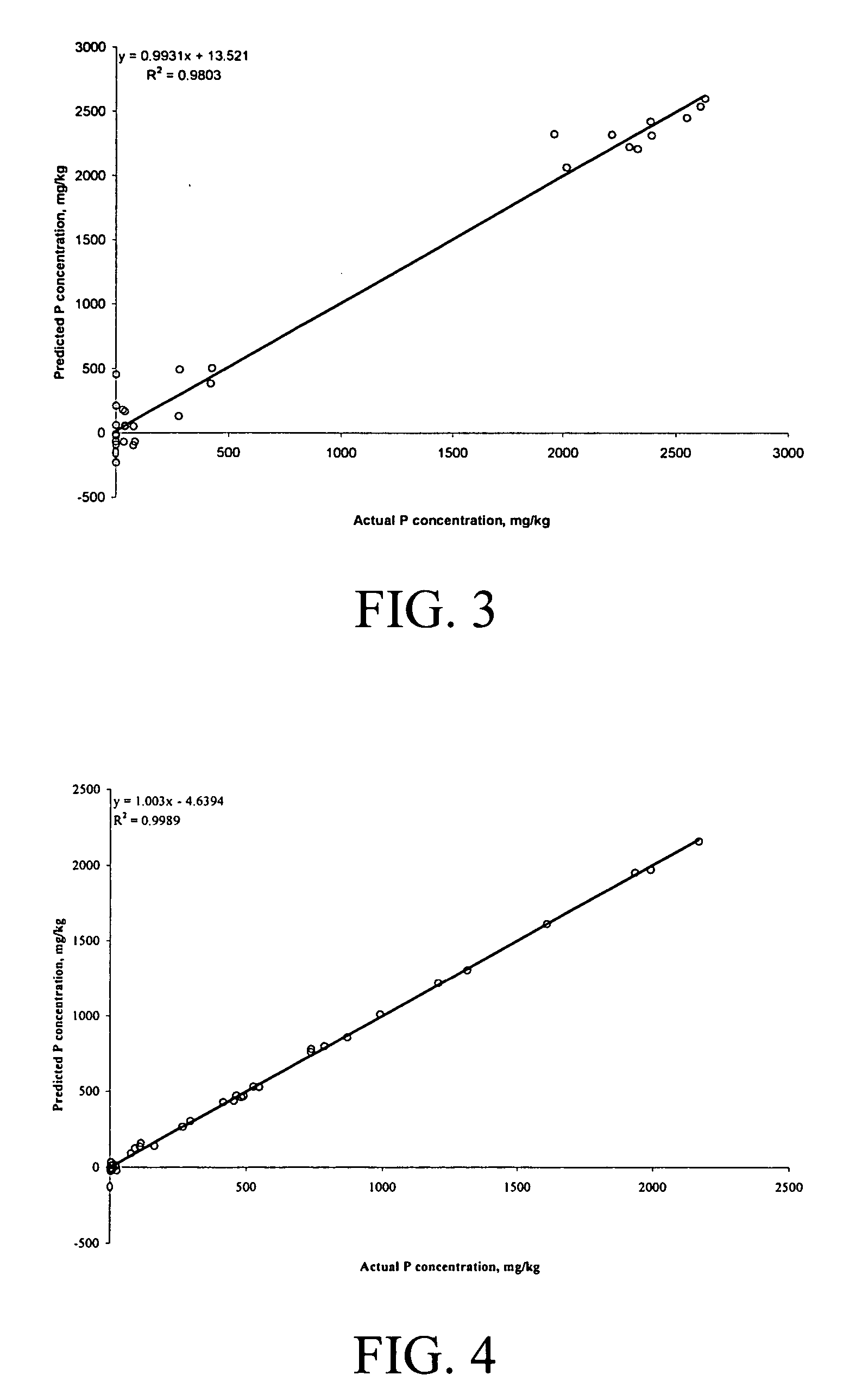Portable raman sensor for soil nutrient detection
a raman sensor and soil technology, applied in the direction of optical radiation measurement, instruments, spectrometry/spectrophotometry/monochromators, etc., can solve the problems of algae bloom, algae proliferation, algae bloom, etc., and achieve the effect of quick and accurate detection of soil nutrient levels
- Summary
- Abstract
- Description
- Claims
- Application Information
AI Technical Summary
Benefits of technology
Problems solved by technology
Method used
Image
Examples
example 1
Portable Raman Phosphorus Sensor
[0058] In one embodiment, a portable Raman phosphorus sensor comprises the following components: three +12V DC batteries, three power supply regulator circuitries, three switches, a fan, a spectrometer, a laser source, a computer, a Raman probe, and a sample compartment. A depiction of this embodiment is illustrated in FIG. 2.
[0059] The power supply circuits provide a 5 V output with 2 A and 4 A, and a 16 V output with 3 A. The switches are used for power I / O control. The fan is used for circulating air in the sensor and keeping the temperature constant. The sample compartment houses a soil sample. The laser source provides a wavelength at 785 nm with a typical full width at half maximum (FWHM) of 0.2 nm. The laser source is coupled with a Raman probe of 1 m length. Light reflected from a soil sample housed in the sample compartment is measured using a TE cooled spectrometer with a spectral range in 340-3640 cm−1.
example 2
Analysis of Soil Samples
[0060] A portable Raman phosphorus sensor (of Example 1) was used to obtain significant phosphorus absorption band in soils and to determine phosphorus concentrations. Initial laboratory tests were conducted to evaluate the performance of the sensor system. Measured Raman spectra and phosphorus concentration of soils were analyzed using partial least squares (PLS) analysis. PLS results produced the highest R2 of 0.98 and root mean square error (RMSE) of 151 mg / kg.
[0061] Soil samples from five different fields in the Lake Okeechobee drainage basins were dried at 104° C. for 24 hours and ground & sieved with a 600 μm sieve. A dark current was measured to determine existing electronic noise in the sensing system. Then, a Raman spectrum of the soil sample was measured using the portable sensor of the invention. The dark measurement was subtracted from the Raman spectrum in order to obtain the spectra related to the soil sample itself. A total of 60 soil samples...
PUM
| Property | Measurement | Unit |
|---|---|---|
| power range | aaaaa | aaaaa |
| wavenumber | aaaaa | aaaaa |
| wavenumber | aaaaa | aaaaa |
Abstract
Description
Claims
Application Information
 Login to View More
Login to View More - R&D
- Intellectual Property
- Life Sciences
- Materials
- Tech Scout
- Unparalleled Data Quality
- Higher Quality Content
- 60% Fewer Hallucinations
Browse by: Latest US Patents, China's latest patents, Technical Efficacy Thesaurus, Application Domain, Technology Topic, Popular Technical Reports.
© 2025 PatSnap. All rights reserved.Legal|Privacy policy|Modern Slavery Act Transparency Statement|Sitemap|About US| Contact US: help@patsnap.com



